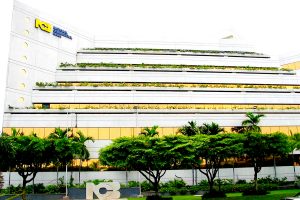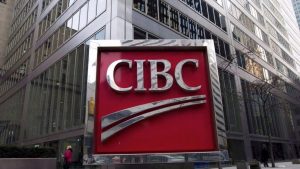By Stan Bishop
The Eastern Caribbean Central Bank (ECCB) is preparing to roll out a new suite of enhanced bank notes by mid-2019. The new notes, which will be made from a polymer-based material, will replace the current notes made from cotton.
The Bank issues notes for eight countries in the Eastern Caribbean Currency Union (ECCU).
Deputy Governor of the Eastern Caribbean Central Bank (ECCB), Trevor Brathwaite, made the disclosure during a recent appearance on “ECCB Connects”, a programme produced by the regional bank.
Brathwaite said polymer is a much more durable substrate with a number of features that enhance the durability of the notes, resulting in the notes lasting much longer in circulation and costing less in printing costs.
“Eventually, it will reduce the cost that the Central Bank has to incur in printing notes,” Brathwaite said. “So that’s a long-term benefit – a reduction in cost – hence the use of the polymer substrate.”
A key difference between the current and proposed new notes is the orientation. The new notes will be lateral — not horizontal like the current ones. Other crucial differences are the enhanced security features.
The $20, $50 and $100 notes will have a ‘holographic window’, or see-through window, so when one holds the note up to light, they will see through that holographic panel. Therefore, if someone attempts to make copies of the note, that portion will turn black.
The $5 and $10 have similar holographic windows but on a smaller scale. There’s a triangle with a feature coloured plant and in that holographic window – the smaller one – will have the same feature so if the note is held up, one can see through that particular holographic window.
For the $20, $50 and $100 notes, the Bank has opted to include a full holographic pane with features embedded in it so that someone holding up the note to light will see the features through the pane, which protects the note against being counterfeited.
“The security features that we have on the current notes will be enhanced and will remain so that persons who are using their notes will see that there’s some familiarity,” said Brathwaite. “We didn’t want to disturb the concept of notes that people have been accustomed to all these years. So we have enhanced graphics of the same features using modern technology.”
According to Brathwaite, many so-called First World countries are now issuing their currencies on this substrate and the sub-region will be the first in this part of the world to issue all of its notes on this particular substrate.
“Trinidad and Tobago had issued a $50 note on a polymer for the anniversary of its Independence, I believe, sometime ago. But that’s the only existing polymer substrate note in our jurisdiction at this point in time.
“So we are leading in this particular area and we expect that eventually that central banks — once we’ve had the benefit of this experience — will see the benefits of issuing notes on this particular substrate,” he explained.
The new notes will have a tactile feature for visually-impaired individuals so that they can feel the note. While it is not exactly Braille, Brathwaite said raised bumps on the notes will distinguish the denomination of the notes.
Former ECCB Governor, Sir K. Dwight Venner’s image will be featured on the new $50 note, in tribute honouring his legacy and the more than 25 years that he spent at the Central Bank. The $50 and $100 notes will be the first set of notes in circulation, Brathwaite said.
Brathwaite said a public sensitization programme will be undertaken prior to the issuance of the new bank notes, including an educational drive targeting people who are visually-impaired.
So should citizens be concerned about transitioning to the new notes?
Not really, Brathwaite said. He cited the U.K., where the pound is now issued on polymer notes, and where citizens have not been adversely affected.
“They’ve accepted the fact that it’s on this new substrate,” he said. “In Canada and Australia as well. So there’s a variety of countries in the so-called First World where the substrate is used.”



